GET GIFT IDEAS
The modern home is always evolving. And to get an idea of what it’s evolving to, look no further than what’s happening within its walls today. With that in mind, we delved into our New This Week series, sifting through Houzz discussions and data to find out what materials, strategies, and concepts will be coming to more homes in 2020.
1. Two-tone kitchen cabinets. Keep upper cabinets white or neutral for a clean, timeless feel, then go crazy with the lower cabinets by playing with various wood tones and deeper colors to take your kitchen in two different style directions.
See more on two-tone cabinets
See more on two-tone cabinets
Popular Stories
2. Outdoor fabric used indoors. Outdoor fabrics are becoming increasingly hard to distinguish from traditional indoor fabrics, and many Houzzers are bringing them inside, where their durability makes them perfect for high-traffic dining room and living room furniture, as shown here.
See more on outdoor fabric used indoors
See more on outdoor fabric used indoors
3. Colored stainless steel appliances. Black stainless steel is making a buzz on Houzz. In a poll, nearly two-thirds of Houzzers say they would consider the dark alternative to shiny silver metal. (Shown here is LG’s new Black Stainless collection.) Not into the darkness? Head to the light with Whirlpool’s Sunset Bronze finish.
4. Extra-large-format tile. Large-format tiles (such as 12 by 24 inches) have been making an appearance in kitchens and bathrooms for some time now, but be on the lookout forextra-large-format ones. Just how extra? Try 31 by 71 inches, like the ceramic Ann Sacks tiles shown here on a fireplace surround project by Pangaea. That’s almost 3 by 6 feet!
5. Bidets. The separate bidet unit in bathrooms never really took off in America. But since manufacturers began creating combination bidet and toilet units, like the Toto version shown here, they’ve been catching on. According to Houzz data, 5 percent of renovated master bathrooms now include bidets.
6. Deep kitchen drawers. Houzz data shows that ease of storage is the top kitchen priority during a remodel. And while deep drawers have been creeping up to replace lower kitchen cabinets for a while now, they’re only getting better — and more affordable. Dividers and inserts let you organize any shape or size of dish, pan or utensil under the sun, and there are even clever options for deep corner drawers, and drawers under range tops and kitchen sinks.
7. Formal dining rooms. Not everyone takes the leap to turn the dining room into an office or media room. For homeowners who entertain frequently, a designated space for gathering for special meals isn’t negotiable, and they’re pouring attention into these rooms.
See more on formal dining rooms
See more on formal dining rooms
8. Niche appliances. Looking for a little added luxury in the kitchen? Steam ovens (shown here) promise to cook food more thoroughly and healthily than microwaves; warming drawers give cooks a little wiggle room to deliver hot meals to family and guests; induction cooktops save space and are safer for homes with young kids; and kimchi refrigerators offer fans of the popular Korean condiment a chance to make their own at home.
9. Heated entryway floors. Sure, heated floors are popular in bathrooms, but if you live in a cold region, consider putting them in your entryway to help melt snow and dry boots.
10. Workhorse islands. Kitchen islands provide additional workspace, but they’ve taken on so much more than that. With deep storage, prep sinks, room for seating and more, workhorse islands are becoming the central feature in modern kitchens.
See more on workhorse islands
See more on workhorse islands
11. Statement mirrors in bathrooms. So long, medicine cabinets. Hello, statement mirrors. Think large wood-framed beauties, backlit modern marvels and ornate vintage gems that boost style in a bathroom.
12. Barely there kitchens. As kitchen layouts become more open, spatial identifiers like walls of cabinetry and full-size appliances fade away, leaving behind airy, fluid spaces that serve multiple functions while looking barely there.
See more on barely there kitchens
See more on barely there kitchens
13. Living rooms that ditch the tech for family. With so much screen time throughout the day and night, homeowners are looking for a calm respite where they can read a book, chat with friends and family or just sit quietly. Thus, the rise of living rooms devoid of digital distraction.
See more on tech-free living rooms
See more on tech-free living rooms
14. Kitchens that embrace openness and raw materials. The inherent simplicity in open shelves and raw materials plays a big part in the barely there kitchen we mentioned earlier. Embrace these, and the rest will follow.
See more kitchens that embrace openness and raw materials
See more kitchens that embrace openness and raw materials
15. Surprising backsplash and countertop pairings. You could play it safe with white subway tile and granite countertops, but sometimes safe is so boring. Instead, consider a different combination, such as a brick backsplash with concrete countertops (as shown here) or yellow ceramic tile with butcher block.
See more surprising backsplash and countertop combinations
See more surprising backsplash and countertop combinations
16. Fully decorated living rooms that don’t go overboard. How do you know when you haven’t decorated enough, or decorated too much? Designers pay attention to scale, light, function and more to strike the right balance.
See more on fully decorated living rooms that don’t go overboard
See more on fully decorated living rooms that don’t go overboard
17. Special kitchen features. Sometimes a kitchen needs that one special element that takes it from a useful space to a vital one. Here, a dining table on casters allows various seating arrangements for casual family meals and large parties with friends.
See more special kitchen features
See more special kitchen features
18. Sunrooms. A sunroom is a top dream space for many homeowners. Even those who don’t have the luxury of having — or adding — one are finding ways to carve out a special sun-drenched corner in their homes.
See more on sunrooms
See more on sunrooms
19. Punched-up white kitchens. White kitchen walls and cabinets — and even countertops in many cases — is a trend that will continue for years to come. To avoid a too-sterile look, however, many designers and homeowners are learning to punch up an all-white space with smart, colorful details through tile, floor-to-ceiling bookcases, raw materials and more.
See more ways to punch up white kitchens
See more ways to punch up white kitchens
20. Bold powder room wall coverings. Dramatic wall coverings in powder rooms are nothing new, but the options for dazzling prints, textures and custom graphics are ever increasing. Here, Black Quilted Lacquer wallpaper by Phillip Jeffries steals the show.
See more bold wallcovering ideas for powder rooms
See more bold wallcovering ideas for powder rooms
21. Mixing modern materials in the kitchen. Looking for something a little more lively than white cabinets and granite countertops in your kitchen? Consider mixing several modern materials, finishes and colors. Here, butcher block countertops get broken up with soapstone near the stove and Carrara marble on a nearby baking station. These mix with olive-green cabinets and stainless steel appliances for an eclectic, sophisticated look.
See more on mixing modern materials
See more on mixing modern materials
22. Attention-seeking bedrooms. A can of paint will certainly transform the look and feel of a bedroom, but to take the sanctuary to the next level, you’re going to need bolder ideas. Here, a rustic wood wall and ceiling feature warms up the otherwise contemporary room.
See more dramatic features to wake up your bedroom
See more dramatic features to wake up your bedroom
23. Bathrooms that feel more like living spaces. Graphic wallpaper, ornate chandeliers and furniture-like pieces turn sterile spaces into ones that feel a lot more like home.
See more bathrooms that feel like living spaces
See more bathrooms that feel like living spaces
24. Fireplaces and fire features. New advances mean you can have all the ambience without the smell, pollution or hassle of traditional wood-burning fireplaces. Plus, fireplaces are making a comeback as living room focal points in lieu of the dark void of a TV screen.
See more rooms designed around fireplaces
See more rooms designed around fireplaces
25. Farmhouse entryways.Stripping away the need for fancy flourishes or decor for decor’s sake, farmhouse style gets at the root of function. That’s why the style makes sense for mudrooms, where simplicity in storage and durability in materials are paramount.
See more farmhouse-style entryways
See more farmhouse-style entryways
Home Decorations
Kitchen Confidential: 9 Trends to Watch for in 2016
If you’re anticipating next year’s hottest kitchen trends, we’re right there with you. So what might the quintessential 2016 kitchen look like? We asked two interior designers for a sneak peek at what’s to come. Hi-tech workstations, ’80s glam and muted color schemes are just a few of the looks they say will lead the pack. Without further ado, here are nine trends they predict will define kitchen design in the new year.
1. Soft, muted color palettes. Good news if you’re already thinking about switching up your color scheme: Kitchen colors are changing, according to interior designer Jane Lockhart. Though white motifs will still dominate, everything from cabinets to backsplashes will be done in less saturated tones. “Charcoal, grays and even neutral pastels like pale blue, pale green gray and tinted whites are the new alternative to the standard white,” she says. She also foresees kitchens sporting lighter wood tones, including walnuts, whitewashed woods and white oak in rift grain.
Bold primary colors, on the other hand, will be placed on the back burner. Interior designer Gail Drury says they’re definitely out as accent colors. “Drier colors will become popular,” she says. “Muted blues and greens and pale yellow pastel will be used as accent colors.
Bold primary colors, on the other hand, will be placed on the back burner. Interior designer Gail Drury says they’re definitely out as accent colors. “Drier colors will become popular,” she says. “Muted blues and greens and pale yellow pastel will be used as accent colors.
2. Smart spaces. Get ready for a hi-tech makeover. Both Lockhart and Drury predict more kitchens will have designated spots for smart devices next year. “Look for areas with hidden charging stations to store devices like phones and tablets so that they are always operable, at hand and charged,” Lockhart says.
Drury says the quintessential 2016 kitchen will focus on convenience for families on the go via accessible smart appliances. “I expect kitchens full of state-of-the-art appliances, from steam ovens to built-in coffee machines to wine coolers.”
Drury says the quintessential 2016 kitchen will focus on convenience for families on the go via accessible smart appliances. “I expect kitchens full of state-of-the-art appliances, from steam ovens to built-in coffee machines to wine coolers.”
3. An ’80s reboot. “The ’80s are back,” Lockhart says. Mirrored backsplashes, brass accessories and high-gloss surfaces aren’t dead by a long shot, but they’re more elegant and refined this time around. “An elegance not seen in the ’80s will be an incorporation of a variety of natural materials to remove the ‘plastic’ look of that great hair decade,” Lockhart says. Drury adds that homeowners will opt for brass with satin rather than shiny finishes.
4. Metal range hoods. One of last year’s biggest trends was metallic finishes, be it copper, brass or bronze. However, homeowners went with small helpings of metal, primarily using faucets, pendant lights and cabinet pulls to incorporate this raw texture.
In 2016, metal will assume a more dominant role in kitchen aesthetics and trump wood as the range hood of choice. “Wood mantle hoods are being replaced with metal hoods or ones that are a combination of wood and metal,” Drury says. If you’re planning to follow suit with next year’s fixation on neutral color tones, a metal hood can introduce a burst of contrast into your kitchen.
In 2016, metal will assume a more dominant role in kitchen aesthetics and trump wood as the range hood of choice. “Wood mantle hoods are being replaced with metal hoods or ones that are a combination of wood and metal,” Drury says. If you’re planning to follow suit with next year’s fixation on neutral color tones, a metal hood can introduce a burst of contrast into your kitchen.
5. Integrated kitchen-living spaces. Maybe your kitchen feels disconnected from the rest of your home. Maybe you want your cooking space to feel more accommodating. Either way, this trend could be for you. Lockhart anticipates more streamlined kitchen designs in which the kitchen converges with the home’s primary living space. “It will become part of the main living space even further,” she says. Designers will merge kitchens and living rooms by including hidden and integrated appliances.
6. A new kind of tradition. While it’s no surprise that present-day kitchens are embracing simple design, Lockhart expects traditional spaces to hop on board too. “Even traditional kitchens may experience a slightly cleaner feel with bold lines and less fussy details,” she says.
But Lockhart says it isn’t the end of traditional design as we know it. It just means homeowners will opt for fewer frills and more calculated, strategically placed details. “Traditional designs will always remain popular, but future renditions will be more deliberate with an emphasis on key elements like hoods, islands, cabinet crowns and so on,” she says.
But Lockhart says it isn’t the end of traditional design as we know it. It just means homeowners will opt for fewer frills and more calculated, strategically placed details. “Traditional designs will always remain popular, but future renditions will be more deliberate with an emphasis on key elements like hoods, islands, cabinet crowns and so on,” she says.
7. Texture-on-texture contrast.It’s time to reimagine contrast in 2016. Drury says variations in texture will rule, rather than traditional methods of contrast. “Strong contrasting designs are being replaced with more texture-on-texture designs,” she says.
It won’t be about mixing and matching textures, though. Instead, designers will reposition the same texture in different patterns throughout the kitchen. “The same exact stone can be finished three ways and combined in the same space,” Drury says. “The difference is very subtle but at the same time makes a statement about attention to detail.”
It won’t be about mixing and matching textures, though. Instead, designers will reposition the same texture in different patterns throughout the kitchen. “The same exact stone can be finished three ways and combined in the same space,” Drury says. “The difference is very subtle but at the same time makes a statement about attention to detail.”
8. A nod to midcentury mod. Lockhart credits this trend to the popularity of midcentury modern furniture and says the period design will trickle down to kitchens. “To some extent, this is already occurring with the increasing use of walnut in islands and cabinet doors,” she says. “But look for more kitchen styles that offer a nod to ’60s modern style, also called Nordic style.” You can get in on this minimalist movement by choosing predominantly white color palettes, designing with light wood textures and clearing away unnecessary clutter. Nordic design is all about simplicity and functionality.
And remember when appliances were clad in color? That midcentury trend is making a comeback too. “Colored sinks, backsplashes and accent cabinets are all items with stronger hues that were previously considered to be neutral elements,” Lockhart says. “Even appliances like slide-in stoves and countertop appliances are taking on color to add a more modern feel with pops of energy throughout the space.”
9. Well-lit cabinetry. Homeowners won’t settle for just ceiling lights and table lamps to illuminate their kitchens. The two designers say extensive cabinet lighting is a trend to watch. “Low-voltage light tape strips are used as accent pieces below cabinets, above cabinets, inside cabinets and below countertop overhangs,” Drury says. “LED lights are the norm.” These features will be grouped with recessed can lights to offer better mood-setting capabilities.
The Kitchen of Tomorrow Is Already Here
What will the kitchen of tomorrow look like? Just ask the people building and planning the kitchens of today. With that in mind, we asked homeowners in 11 countries — the U.S., Canada, the United Kingdom, Ireland, France, Germany, Italy, Russia, Spain, Sweden and Denmark — through a series of discussions, polls, surveys and interviews to describe the ins and outs of kitchen projects they had recently completed, have underway or are planning to start in the next three months.
Houzz data shows that 41 percent of homeowners are remodeling kitchens that are 16 to 30 years old. With nearly 9,000 people responding to Houzz’s most recent kitchen survey — 85 percent had completed or worked on their kitchen project in 2015 and the rest planned to start in early 2016 — that means their choices in layout, materials, storage and special features offer insight into trends you’ll no doubt see in kitchens for years to come.
Houzz data shows that 41 percent of homeowners are remodeling kitchens that are 16 to 30 years old. With nearly 9,000 people responding to Houzz’s most recent kitchen survey — 85 percent had completed or worked on their kitchen project in 2015 and the rest planned to start in early 2016 — that means their choices in layout, materials, storage and special features offer insight into trends you’ll no doubt see in kitchens for years to come.
But don’t expect Jetsons-style whiz-bang gadgetry anytime soon. Other than a few high-tech appliances, homeowners aren’t looking to impress NASA with their kitchens. Apart from TVs and iPads, the majority of homeowners in almost every country we surveyed aren’t interested in many high-tech features. “Programming ovens from an iPhone is not something people are doing, and people don’t care about a refrigerator that will send a message to your phone that it needs to be defrosted,” says Ken Burghardt, owner ofDomicile San Francisco. Instead, they’re focusing on materials and features that provide basic function and classic style.
The local climate and size of the space dictate a lot about how a kitchen will look. But so do cultural influences. For example, step into a kitchen in Spain and you’re more likely to see a built-in coffee station and walk-in wine cellar than in other countries we surveyed. Nearly a quarter of Spanish homeowners plan to add a built-in coffee or tea station, while almost 10 percent plan to add a wine cellar.
But for the most part, kitchens from all the countries we surveyed are a lot alike. Homeowners almost everywhere seem to want white cabinets, pullout garbage and recycling bins, more pantry storage and new countertops, appliances, cabinets — new everything, really.
The local climate and size of the space dictate a lot about how a kitchen will look. But so do cultural influences. For example, step into a kitchen in Spain and you’re more likely to see a built-in coffee station and walk-in wine cellar than in other countries we surveyed. Nearly a quarter of Spanish homeowners plan to add a built-in coffee or tea station, while almost 10 percent plan to add a wine cellar.
But for the most part, kitchens from all the countries we surveyed are a lot alike. Homeowners almost everywhere seem to want white cabinets, pullout garbage and recycling bins, more pantry storage and new countertops, appliances, cabinets — new everything, really.
Popular Stories
Give Me a ‘U’
The basic layout of the cabinets and appliances dictates what kind of experience you’ll have working in a kitchen. It’s a matter of preference, and often depends on the layout you start with and how much time and money you’re willing to spend to change it.
In the U.S., Canada, U.K. and Germany, U-shaped kitchens (like the one shown here) are the most popular, according to the survey. In the U.K., designer Conrad Hendrick of LWK Kitchens says history plays a role in kitchen layouts. “Unless you are willing to remodel, then your home’s existing architecture will often dictate what your layout will be,” he says. “And with Georgian, Victorian and Edwardian architecture still imprinted on many modern homes, it follows that these styles naturally influence kitchen design, and in many modern cases lean toward a U-shaped kitchen layout.”
Aside from the historical influence, Hendrick says people desire the U-shaped layout because it provides a generous work surface and storage capacity. “They are also highly efficient and simple to use because of the limited number of steps required when moving between different areas of the kitchen,” he says.
The basic layout of the cabinets and appliances dictates what kind of experience you’ll have working in a kitchen. It’s a matter of preference, and often depends on the layout you start with and how much time and money you’re willing to spend to change it.
In the U.S., Canada, U.K. and Germany, U-shaped kitchens (like the one shown here) are the most popular, according to the survey. In the U.K., designer Conrad Hendrick of LWK Kitchens says history plays a role in kitchen layouts. “Unless you are willing to remodel, then your home’s existing architecture will often dictate what your layout will be,” he says. “And with Georgian, Victorian and Edwardian architecture still imprinted on many modern homes, it follows that these styles naturally influence kitchen design, and in many modern cases lean toward a U-shaped kitchen layout.”
Aside from the historical influence, Hendrick says people desire the U-shaped layout because it provides a generous work surface and storage capacity. “They are also highly efficient and simple to use because of the limited number of steps required when moving between different areas of the kitchen,” he says.
L-shaped layouts reign supreme in every other country except Denmark, where nearly a third of homeowners want a galley kitchen.
In Russia, where the majority of homeowners choose an L-shaped layout (like the one shown here), interior designer Andrey Maksimov-Pavlychev says a legacy of small-space mentality and nostalgia has a lot to do with the preference, and is likely to continue into the future.
“Our people have always lived in tiny apartments, so they obviously did their best to make the kitchen occupy less space,” he says. “These layouts allow us to fit all the appliances you need in a very small space. Even when people move to bigger apartments, memories make them choose the angular configurations while they could afford an island kitchen or any other kind.”
In Russia, where the majority of homeowners choose an L-shaped layout (like the one shown here), interior designer Andrey Maksimov-Pavlychev says a legacy of small-space mentality and nostalgia has a lot to do with the preference, and is likely to continue into the future.
“Our people have always lived in tiny apartments, so they obviously did their best to make the kitchen occupy less space,” he says. “These layouts allow us to fit all the appliances you need in a very small space. Even when people move to bigger apartments, memories make them choose the angular configurations while they could afford an island kitchen or any other kind.”
New interpretations. Though Japan was not part of the survey, which was conducted online from October to November 2015, we reached out to Toshiyuki Imai, manager of Japanese kitchen design firm Kitchen House’s Tokyo showroom. Imai says one of the most popular layouts in Japan is somewhat like an open galley style, in which the kitchen counter and dining table are linked seamlessly together.
“This is efficient because it makes it easy to deliver meals from the kitchen to the dining, while it’s still possible to change the layout of the dining table according to the number of guests you are entertaining,” Imai says.
And designers are responding to this with new interpretations of the traditional Japanese kitchen. Kitchen House recently launched the combination kitchen island and dining element seen here in collaboration with architect Kengo Kuma. It combines modern design and technology with “primitive materials like glued laminated bamboo board, black iron frame and cast aluminum,” Imai says.
“This is efficient because it makes it easy to deliver meals from the kitchen to the dining, while it’s still possible to change the layout of the dining table according to the number of guests you are entertaining,” Imai says.
And designers are responding to this with new interpretations of the traditional Japanese kitchen. Kitchen House recently launched the combination kitchen island and dining element seen here in collaboration with architect Kengo Kuma. It combines modern design and technology with “primitive materials like glued laminated bamboo board, black iron frame and cast aluminum,” Imai says.
The Rise of Porcelain and Engineered QuartzNew countertops are the top feature most homeowners want in their kitchen. While granite remains popular for its look — despite its maintenance — other materials are catching the attention of homeowners.
George Lisac, owner of Kerrock Countertops in Union City, California, is seeing a big rise in requests for engineered quartz. “Even more than granite,” he says. Engineered quartz is 97 percent crushed quartz mixed with 3 percent resin to create a nonporous material that doesn’t need to be sealed like granite. It was the most popular countertop material in the U.S. after granite, and the No. 1 choice in Canada, Ireland, Spain and Australia.
But not everyone embraces the material. Burghardt, owner of Domicile San Francisco, says he’s been ripping out and replacing the engineered quartz countertops he installed years ago. “People are not happy with them,” he says. “People also universally seem disappointed with the matte finishes which are prevalent in our market. They show a lot of fingerprints and look dirty as opposed to the polished surfaces.”
Instead, Neolith, a porcelain material from Spain, shown here mimicking Calacatta marble, has been taking over his clients’ kitchens lately. “You can’t scratch it, burn it or stain it,” he says.
George Lisac, owner of Kerrock Countertops in Union City, California, is seeing a big rise in requests for engineered quartz. “Even more than granite,” he says. Engineered quartz is 97 percent crushed quartz mixed with 3 percent resin to create a nonporous material that doesn’t need to be sealed like granite. It was the most popular countertop material in the U.S. after granite, and the No. 1 choice in Canada, Ireland, Spain and Australia.
But not everyone embraces the material. Burghardt, owner of Domicile San Francisco, says he’s been ripping out and replacing the engineered quartz countertops he installed years ago. “People are not happy with them,” he says. “People also universally seem disappointed with the matte finishes which are prevalent in our market. They show a lot of fingerprints and look dirty as opposed to the polished surfaces.”
Instead, Neolith, a porcelain material from Spain, shown here mimicking Calacatta marble, has been taking over his clients’ kitchens lately. “You can’t scratch it, burn it or stain it,” he says.
To demonstrate in his showroom, Burghardt says he scrapes the surface of Neolith with a screwdriver until it throws sparks. “No scratching,” he says. Then he takes a flamethrower to it. “We will brown the top of a crème brûlée, then aim the flame at the countertop and hold it there. No cracking or discoloration. Pour zinfandel, hot chili oil, blueberry and nothing happens. And no, I do not have stock in the company.”
In Japan, artificial stone seems to be moving out of the way for materials like quartz and ceramics. “Our hottest one for next year is durable ceramic panel [shown here], originally developed as an exterior material,” says Imai of Kitchen House.
Stainless steel also is a popular countertop material for the Japanese. In an informal Houzz Japan poll, stainless steel was the No. 1 chosen material for kitchen countertops. “People tend to choose it in order to give a cool and sharp image to the space, not only because of its durability and heat resistance,” Imai says.
Stainless steel also is a popular countertop material for the Japanese. In an informal Houzz Japan poll, stainless steel was the No. 1 chosen material for kitchen countertops. “People tend to choose it in order to give a cool and sharp image to the space, not only because of its durability and heat resistance,” Imai says.
Induction Junction
Once they take care of the kitchen basics — cabinets, countertops, faucets and plumbing fixtures, sinks, lighting, appliances and wall color — many people turn their attention to special features, if the budget allows, that can make life more convenient and enjoyable. In the kitchens of tomorrow, expect to see extra pantry storage, islands and breakfast bars. But, depending on which country you’re in, expect a few surprises too.
A recent Houzz discussion about kitchen remodeling desires sheds light on a few sought-after features. Induction cooktops, charging stations for electronics, retractable power points, baseboard vacuum systems, built-in pet feeding stations, ovens with side-opening doors, as shown here, and drawers instead of shelves on the bottom cabinets came up frequently.
But there were also calls for a few nontraditional kitchen features. “A sexy man that will do dishes, cook and take out trash,” commented Houzz user Brandi Nash Hicks.
Meanwhile, homeowner Sarah Haubert had an inventive idea. For her recently built custom home, she mounted the motor for the range hood outside. “So I can be cooking at the stove with the fan on high and it is amazingly quiet,” she says. “This has seriously been one of my favorite things we did in this house.”
Once they take care of the kitchen basics — cabinets, countertops, faucets and plumbing fixtures, sinks, lighting, appliances and wall color — many people turn their attention to special features, if the budget allows, that can make life more convenient and enjoyable. In the kitchens of tomorrow, expect to see extra pantry storage, islands and breakfast bars. But, depending on which country you’re in, expect a few surprises too.
A recent Houzz discussion about kitchen remodeling desires sheds light on a few sought-after features. Induction cooktops, charging stations for electronics, retractable power points, baseboard vacuum systems, built-in pet feeding stations, ovens with side-opening doors, as shown here, and drawers instead of shelves on the bottom cabinets came up frequently.
But there were also calls for a few nontraditional kitchen features. “A sexy man that will do dishes, cook and take out trash,” commented Houzz user Brandi Nash Hicks.
Meanwhile, homeowner Sarah Haubert had an inventive idea. For her recently built custom home, she mounted the motor for the range hood outside. “So I can be cooking at the stove with the fan on high and it is amazingly quiet,” she says. “This has seriously been one of my favorite things we did in this house.”
Range hoods. In many countries, homeowners are paying special attention to range hoods, which have improved in strength and appearance over the years, according to Spanish architectOskar Velez. “Good parties always end in the kitchen,” he says. “Some people are worried about the smell of food, but nowadays there are very effective and well-designed extractors, even embedded in the ceiling, so food smell should not be a problem unless your diet is based on fried food.” Velez designed the home shown here, which has a recessed range hood.
Wood-burning stoves. Walk into a kitchen in Sweden, the U.K. and Ireland — countries known to have the occasional day of dreary weather — and you might find a crackling wood-burning stove, like the one shown in this Dublin, Ireland, kitchen.
“In the midst of ever-increasing energy bills, people in the U.K. and Ireland are often turning to wood-burning stoves, as they are cheaper to run than gas or electric,” says London designer Conrad Hendrick of LWK Kitchens. “Some types of wood-burning stove are also eligible for the government’s Renewable Heat Incentive (RHI). Made from cast iron, wood-burning stoves retain their heat for longer, which is important for those long winter nights where we all want to keep warm. But coupled with their functionality and energy-saving qualities, wood-burning stoves are also popular as a visually impressive feature within the kitchen or living room. They create a stylish and appealing look, within the midst of a warm and welcoming atmosphere.”
“In the midst of ever-increasing energy bills, people in the U.K. and Ireland are often turning to wood-burning stoves, as they are cheaper to run than gas or electric,” says London designer Conrad Hendrick of LWK Kitchens. “Some types of wood-burning stove are also eligible for the government’s Renewable Heat Incentive (RHI). Made from cast iron, wood-burning stoves retain their heat for longer, which is important for those long winter nights where we all want to keep warm. But coupled with their functionality and energy-saving qualities, wood-burning stoves are also popular as a visually impressive feature within the kitchen or living room. They create a stylish and appealing look, within the midst of a warm and welcoming atmosphere.”
Neutral Is Supreme — But Here Comes Green
White dominates homeowners’ color choices for things like cabinets, walls and even backsplashes. But it’s not all because people are color-shy. The noncolor color serves practical purposes too.
“We need the white colors to reflect any sunlight that comes through the windows during those long, dark winters. In general the weather is not great, so any reflection of light is important,” says Allan Torp, a lifestyle expert for Bungalow5 in Copenhagen, Denmark. “It keeps the kitchen looking bright and clean, and doesn’t induce a heavy feeling when those sunshine days are over.”
White dominates homeowners’ color choices for things like cabinets, walls and even backsplashes. But it’s not all because people are color-shy. The noncolor color serves practical purposes too.
“We need the white colors to reflect any sunlight that comes through the windows during those long, dark winters. In general the weather is not great, so any reflection of light is important,” says Allan Torp, a lifestyle expert for Bungalow5 in Copenhagen, Denmark. “It keeps the kitchen looking bright and clean, and doesn’t induce a heavy feeling when those sunshine days are over.”
Neutral colors define U.S. and Canadian kitchens too, where white cabinets and beige and gray walls are preferred, according to the survey. But green, such as the minty shade shown here, and blue are creeping in. “I think green edges out blue in kitchens because it’s the more organic, appetizing color of the two,” says Jennifer Ott, an interior designer who specializes in paint consultations.
“Plus, there’s such a push now to eat unprocessed, healthy whole foods that I think people are drawn to having a vegetal hue in the space,” she adds. “My other theory is that we live in pretty stressful, trying times and green is thought to be a happy hue, unlike blue and gray. Yet it’s not as high-energy as the other happy hues of yellow and orange. So green is a nice compromise between happy yet soothing and stress-relieving.”
“Plus, there’s such a push now to eat unprocessed, healthy whole foods that I think people are drawn to having a vegetal hue in the space,” she adds. “My other theory is that we live in pretty stressful, trying times and green is thought to be a happy hue, unlike blue and gray. Yet it’s not as high-energy as the other happy hues of yellow and orange. So green is a nice compromise between happy yet soothing and stress-relieving.”
In Japan, homeowners are saying sayonara to all-white kitchens. “White kitchens had been most popular for more than 10 years until 2010,” says Yukiko Tahara, owner and designer at LiB contents in Tokyo. “But since then, darker shades like stone gray or dark brown have been chosen by more and more people. I’ve heard that it happened after the earthquake disaster in 2011, because people came to prefer calm, tranquil and relaxing tones at home.”
Mariette Barsoum of Divine Design+Build says our hectic, plugged-in lifestyle is probably a factor in the choice to go neutral, so expect an ongoing return to tranquility and relaxation in the kitchen for the foreseeable future. “Life is very busy and very stressful,” Barsoum says. “We want to come home and feel relaxed.”
Mariette Barsoum of Divine Design+Build says our hectic, plugged-in lifestyle is probably a factor in the choice to go neutral, so expect an ongoing return to tranquility and relaxation in the kitchen for the foreseeable future. “Life is very busy and very stressful,” Barsoum says. “We want to come home and feel relaxed.”








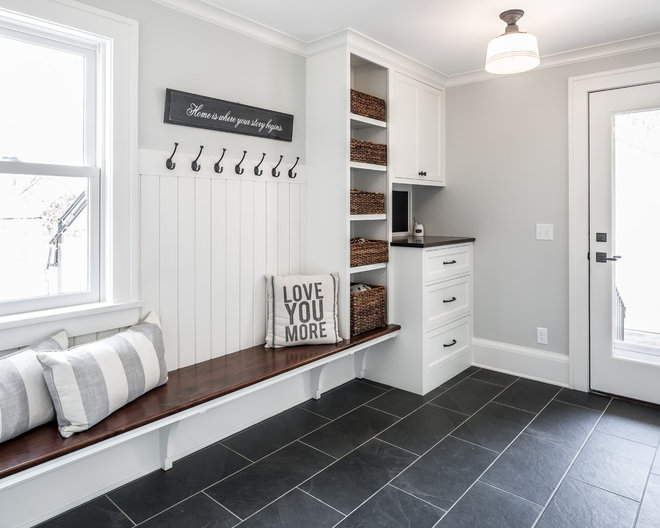












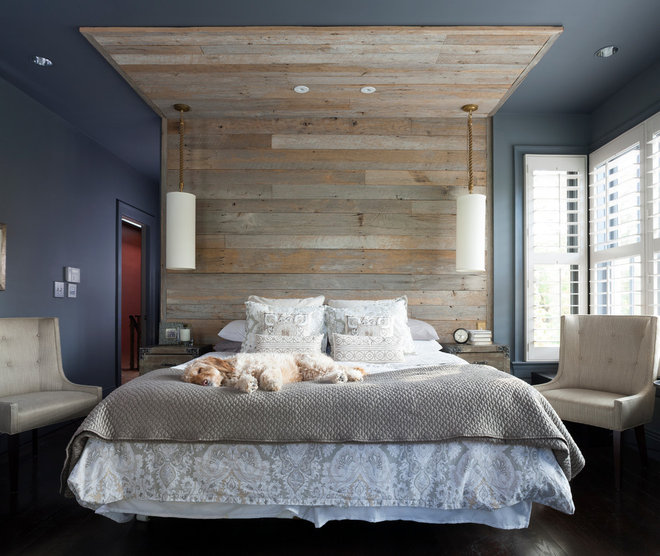


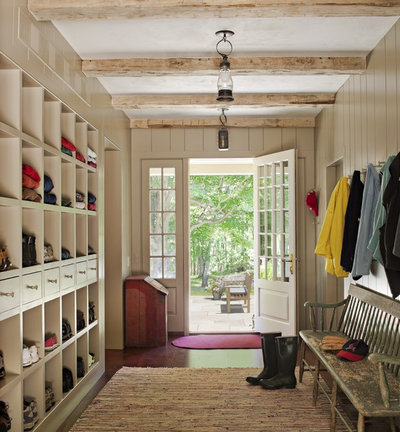












































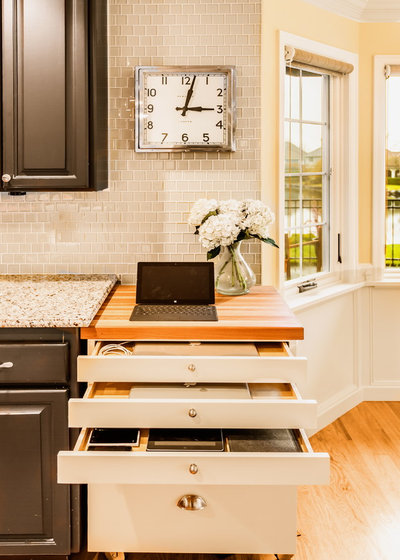




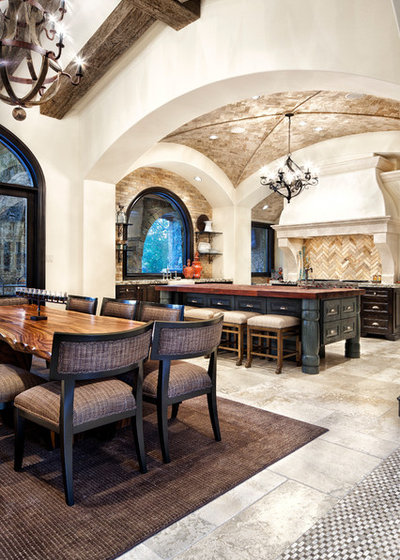


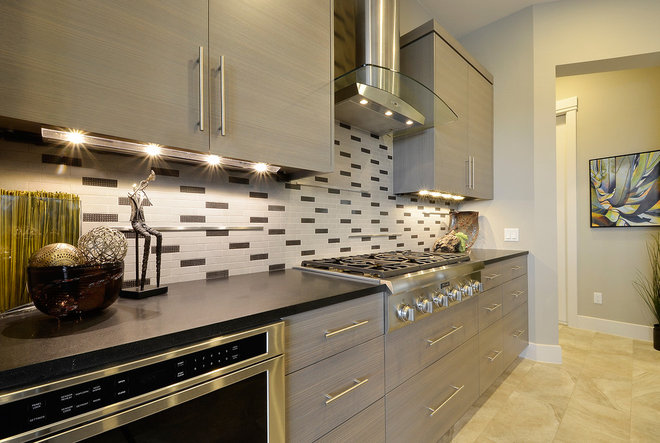


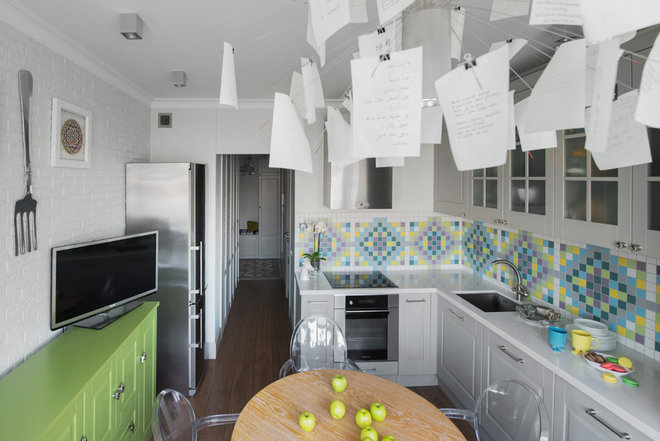
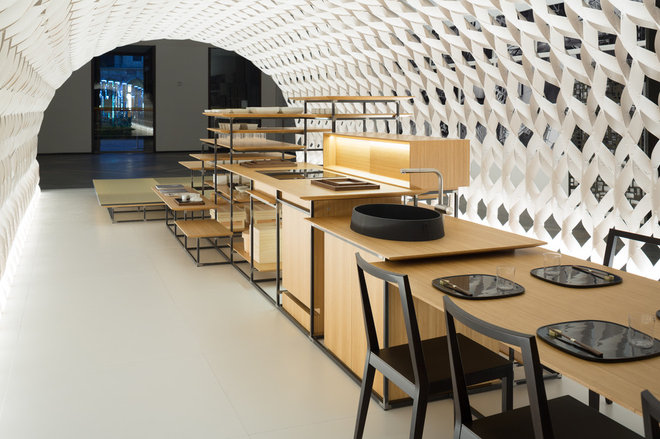







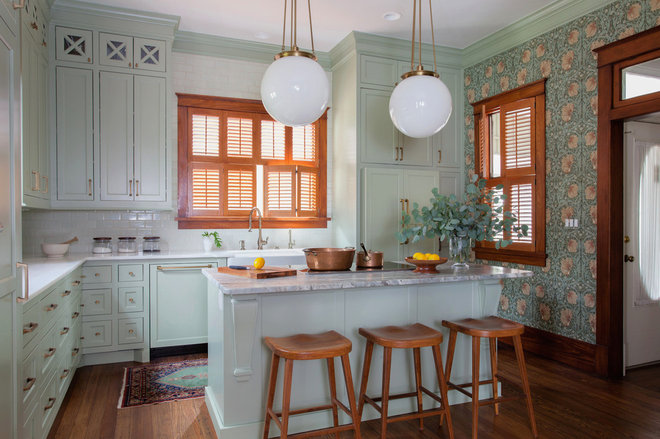

No comments:
Post a Comment